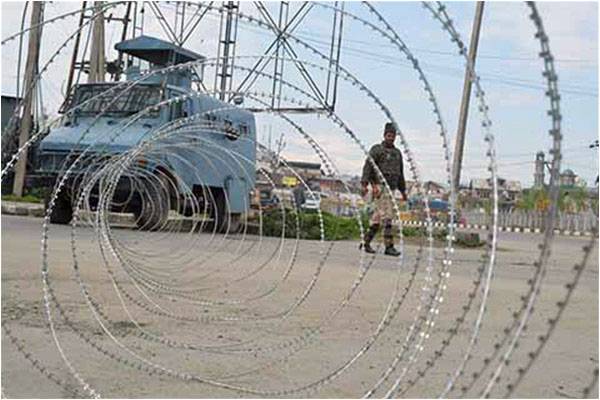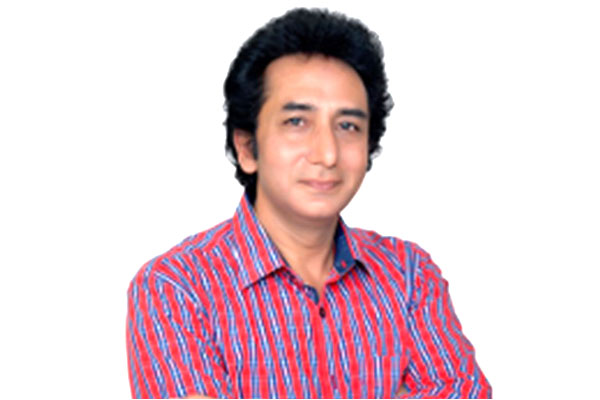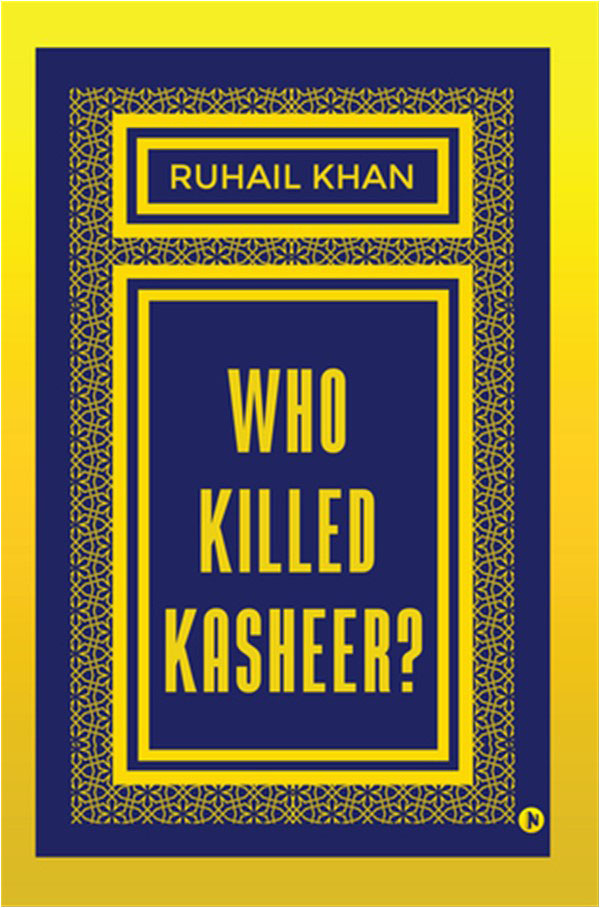
Few literati may have heard about Ruhail Khan yet. But I think it is very important to know him and read him. Khan has made an entry into the world of literature with a bang – with his extraordinary poetry that not only depicts today’s Kashmir but also its chequered past, spanning several hundred years. Who Killed Kasheer? is a chronicle, beautifully weaved into a poetic expression that keeps you hooked as it makes you feel your own self and your surroundings. It is an epic of beauty, loss, suffering, desperation, sacrifice, courage and, above all, hope.
It is a book about Kashmir, its ethos and pathos. Ruhail has not been introduced as a poet yet –his expertise is something far from that of a traditional poet. He is a corporate business leader, a top management professional, an industry thought leader, a much-sought-out keynote speaker and a published author. He has books to his credit but his craft as a poet had not come to the fore yet.

Going through the book one can fathom as to how this Kashmir-born author, now settled in Mumbai, has deeply analysed the Kashmir tangle. Expressing it all in free verse, he sees this regional conundrum as having spawned a diverse, disparate, and often contradictory and conflating potpourri of attitudes, perceptions, commentaries, denunciations, and justifications largely fueled by individual or collective cognizance of and fidelity to concepts of nationalism, freedom, equality, liberty, justice, free-will and dignity of life. Accordingly, the representation of the genesis and progression of Kashmir’s turmoil has vacillated between an Orwellian dystopia and a Morean utopia.
The book encapsulates and vividly describes the existential dilemma of Kashmir as a realm and Kashmiris as an ethnic and socio-political entity. It is a concerted and honest endeavour to comprehend, imbibe, and reflect upon the genesis, beauty, history, politics, culture, syncretic traditions and turmoil that the realm has had to contend with until today. It encompasses a comprehensive exposition of the loss, pain, torture, misery, apprehensions, helplessness, cravings, aspirations, hopes, and dreams etc. of common Kashmiri people cutting across religious denominations, ethnicity, social stratification, political affiliations, sex, age, or historical chronology.
Ruhail has spared none. Starting from his childhood memories the section titled “I remember” is full of what Kashmir looked like, the life, the togetherness, tolerance, compassion, the beauty and much more, but ends with a sigh: “The visions of the future, the aspirations entertained, the choices imposed and expectations loaded”. In the next chapter he finds himself asking, “Where has the glory gone?”
Who Killed Kasheer? is the central and focal point as this long poem takes us to history…
“Legendary Kashayapa got credited with your habitation,
Kalhana recorded your journey in hyperbole,
Kanishka embedded Buddhism,
Mihirkula stamped terror on their hearts”
Almost touching all the phases of turbulent history in best possible expression without mentioning the dates he records it.
Yusuf Shah resisted the might of Mughals
Victorious twice but treachery prevailed
Masters changed and Durranis came to fore
O Pandits shouldered the Afghans crossed the shore.
He goes on and touches upon 1947:
“Standstill, Independence, Accession all got inked,
But your Kashur had his aspiration jinxed”
Ruhail uses all the changed vocabulary of Kashmir since 1990 – like the crackdown, the ambush, the AK-47, the LMG, cross firing etc.
“TADA, AFSPA, PSA were the spawn of terror,
Many a youth did in their wake wither,
Staying alive became a cherished dream,
You shivered with fear to hear your masses scream”.

What is interesting is that the author has not missed any expression that would narrate the turbulence of hearts and minds. “Boots in the mosques, boots on the chests, boots on the houses, boots on breasts, boots in the blossoms, boots on the harvests, boots in the orchards, boots on crests”. He is sad about the separation of Kashmiri Muslims and Pandits and titles the poem “Twins of Fate”, where he writes:
“One coerced in a scripted exile, the other forced in a while,
Measured their losses and pain,
With misery as the only gain
Rub the slate clean,
Make a fresh beginning,
Be welcome with open arms,
Come back to their hearth and farms”
“Kashmiriyat”, “Crackdown”, “Oh! Daughters of Eve”, “Two sides of a Coib”, “Saonth (Spring)”, “Wande (Winter)”, “Sangbaz (Stone Thrower)” and many more poems are reliving the good, sad and bitter memories of Kashmir. “What If?” is another beautiful poem that starts with “What if Akbar had not deceived Yusuf Shah Chak”.
“Kasher Koor”, “The Conch that fell Silent”, “Time” and “Hope and Beyond” sometimes send you into a melancholic despair. “Poem on Half Widows” ends with:
“I still stand there, A placard in my hand,
They call me Half Widows,
But there are None’s too”.
The book ends with a long poem “An Ode to the alphabets of Koshur Stoicism” that again brings the resilience into the picture. “The coffins of your valiant folks are the testimony of their valor, The sacrifices of your venerable fallen shall not go in vain, In the verdant Valleys and across the vanguards of vanity, Who is the victor and who is being vanquished”
Kashmiris take pride in Agha Shahid Ali for he was the narrator of tyranny and trauma but Ruhail is not lagging far behind. He is a revolutionary writer and an authentic story teller. I have no doubt that when the book comes into hands of readers it will surely test their emotional bandwidth and etch every word on their hearts, minds and souls – indelibly. Above all, it surprises you with its disdain for political correctness and lack of espousal of ideologies.
It is difficult to match his valour in introducing today’s Kashmir to the world.
It is a book about Kashmir, its ethos and pathos. Ruhail has not been introduced as a poet yet –his expertise is something far from that of a traditional poet. He is a corporate business leader, a top management professional, an industry thought leader, a much-sought-out keynote speaker and a published author. He has books to his credit but his craft as a poet had not come to the fore yet.

Going through the book one can fathom as to how this Kashmir-born author, now settled in Mumbai, has deeply analysed the Kashmir tangle. Expressing it all in free verse, he sees this regional conundrum as having spawned a diverse, disparate, and often contradictory and conflating potpourri of attitudes, perceptions, commentaries, denunciations, and justifications largely fueled by individual or collective cognizance of and fidelity to concepts of nationalism, freedom, equality, liberty, justice, free-will and dignity of life. Accordingly, the representation of the genesis and progression of Kashmir’s turmoil has vacillated between an Orwellian dystopia and a Morean utopia.
The book encapsulates and vividly describes the existential dilemma of Kashmir as a realm and Kashmiris as an ethnic and socio-political entity. It is a concerted and honest endeavour to comprehend, imbibe, and reflect upon the genesis, beauty, history, politics, culture, syncretic traditions and turmoil that the realm has had to contend with until today. It encompasses a comprehensive exposition of the loss, pain, torture, misery, apprehensions, helplessness, cravings, aspirations, hopes, and dreams etc. of common Kashmiri people cutting across religious denominations, ethnicity, social stratification, political affiliations, sex, age, or historical chronology.
Ruhail has spared none. Starting from his childhood memories the section titled “I remember” is full of what Kashmir looked like, the life, the togetherness, tolerance, compassion, the beauty and much more, but ends with a sigh: “The visions of the future, the aspirations entertained, the choices imposed and expectations loaded”. In the next chapter he finds himself asking, “Where has the glory gone?”
Who Killed Kasheer? is the central and focal point as this long poem takes us to history…
“Legendary Kashayapa got credited with your habitation,
Kalhana recorded your journey in hyperbole,
Kanishka embedded Buddhism,
Mihirkula stamped terror on their hearts”
Almost touching all the phases of turbulent history in best possible expression without mentioning the dates he records it.
Yusuf Shah resisted the might of Mughals
Victorious twice but treachery prevailed
Masters changed and Durranis came to fore
O Pandits shouldered the Afghans crossed the shore.
He goes on and touches upon 1947:
“Standstill, Independence, Accession all got inked,
But your Kashur had his aspiration jinxed”
Ruhail uses all the changed vocabulary of Kashmir since 1990 – like the crackdown, the ambush, the AK-47, the LMG, cross firing etc.
“TADA, AFSPA, PSA were the spawn of terror,
Many a youth did in their wake wither,
Staying alive became a cherished dream,
You shivered with fear to hear your masses scream”.

What is interesting is that the author has not missed any expression that would narrate the turbulence of hearts and minds. “Boots in the mosques, boots on the chests, boots on the houses, boots on breasts, boots in the blossoms, boots on the harvests, boots in the orchards, boots on crests”. He is sad about the separation of Kashmiri Muslims and Pandits and titles the poem “Twins of Fate”, where he writes:
“One coerced in a scripted exile, the other forced in a while,
Measured their losses and pain,
With misery as the only gain
Rub the slate clean,
Make a fresh beginning,
Be welcome with open arms,
Come back to their hearth and farms”
“Kashmiriyat”, “Crackdown”, “Oh! Daughters of Eve”, “Two sides of a Coib”, “Saonth (Spring)”, “Wande (Winter)”, “Sangbaz (Stone Thrower)” and many more poems are reliving the good, sad and bitter memories of Kashmir. “What If?” is another beautiful poem that starts with “What if Akbar had not deceived Yusuf Shah Chak”.
“Kasher Koor”, “The Conch that fell Silent”, “Time” and “Hope and Beyond” sometimes send you into a melancholic despair. “Poem on Half Widows” ends with:
“I still stand there, A placard in my hand,
They call me Half Widows,
But there are None’s too”.
The book ends with a long poem “An Ode to the alphabets of Koshur Stoicism” that again brings the resilience into the picture. “The coffins of your valiant folks are the testimony of their valor, The sacrifices of your venerable fallen shall not go in vain, In the verdant Valleys and across the vanguards of vanity, Who is the victor and who is being vanquished”
Kashmiris take pride in Agha Shahid Ali for he was the narrator of tyranny and trauma but Ruhail is not lagging far behind. He is a revolutionary writer and an authentic story teller. I have no doubt that when the book comes into hands of readers it will surely test their emotional bandwidth and etch every word on their hearts, minds and souls – indelibly. Above all, it surprises you with its disdain for political correctness and lack of espousal of ideologies.
It is difficult to match his valour in introducing today’s Kashmir to the world.

